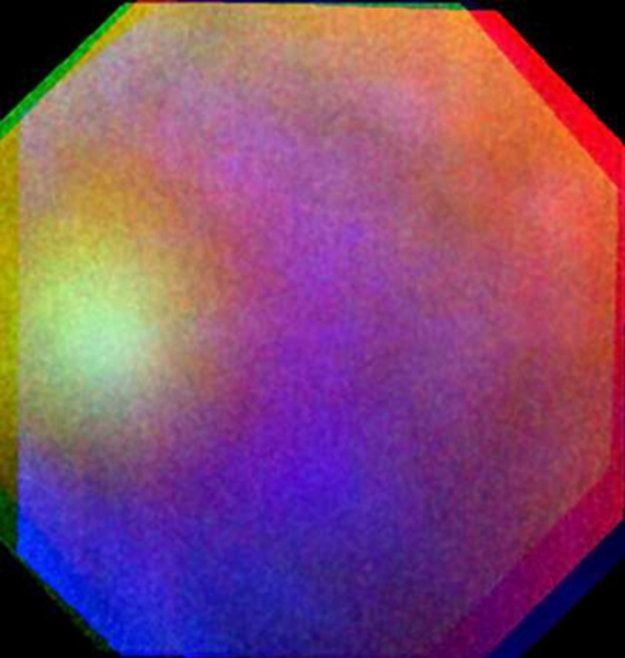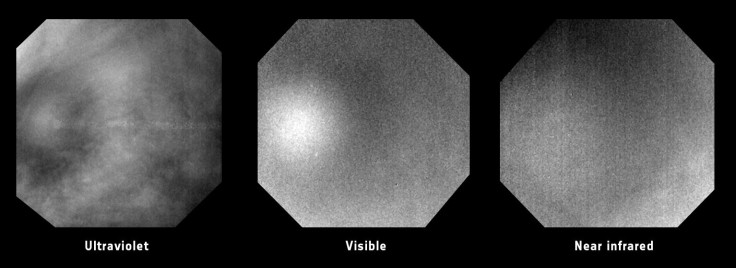A Rainbow On Venus: European Space Agency Orbiter Captures Rainbow-Like ‘Glory’ In New Image [PHOTO]
The European Space Agency has captured a rainbow-like ‘glory” on Venus. The phenomenon is easily observed on Earth but it is the first time the feature has been observed on another planet.

ESA’s Venus Express Orbiter captured the glory on Venus on July 24, 2011. According to the space agency, a glory is a localized feature when the viewer is positioned between the sun and cloud particles. These features can be seen from airplanes as light is scattered by cloud particles, such as water, and reflected back.
Rainbows will cover a wide stretch of sky whereas a glory covers a small area and consist of a bright center surrounded by rings of light, similar to a halo effect. ESA researchers were hoping to catch a glory on Venus to gain new insights on the composition of particles in the planet’s atmosphere.
According to ESA, in order for a glory to occur the cloud droplets need to be spherical and roughly the same size. The Venus glory was captured in ultraviolet, visible and near-infrared light and was observed 70 kilometers (43.5 miles) above the surface of the planet and measured 1,200 kilometers (745.6 miles) wide.

With the Venus Express Orbiter in perfect position, above the clouds and the Sun behind the orbiter, ESA researchers captured the glory and are learning more about the size and characteristics of the cloud particles in Venus' atmosphere. The atmosphere of the planet consists mostly of carbon dioxide with clouds of sulfuric acid which helps heat up the planet, reports Space.com.
Based on the new observations, the researchers have determined the sulphuric acid cloud droplets are much smaller than water particles on Earth. According to ESA, the cloud droplets on Venus are 1.2 microns, or micrometers across whereas cloud droplets on Earth are around 10 to 15 microns across. A micron, or micrometer, is one thousandth of a millimeter.

The brightness variations in the glory may be due to an unkown element or component that absorbs UV light in Venus' atmosphere and the researchers hope to solve that mystery with further observations.
© Copyright IBTimes 2025. All rights reserved.






















